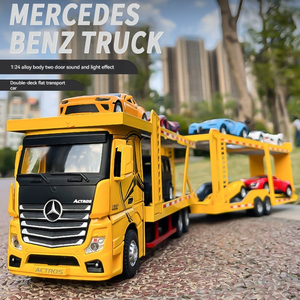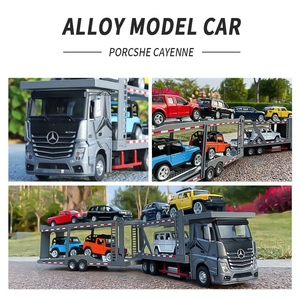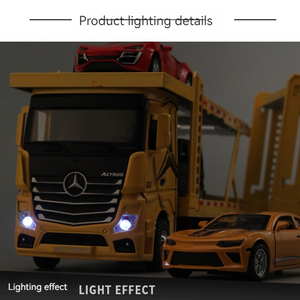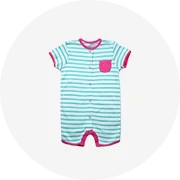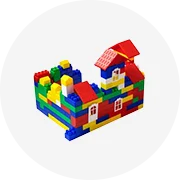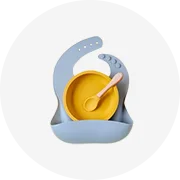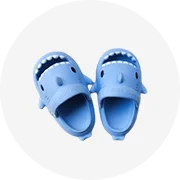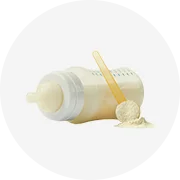Types of Toy Flatbed Trucks
Toy flatbed trucks come in various designs, each crafted with unique features to suit different play styles and age groups. Understanding the different types helps parents, collectors, and retailers make informed decisions.
Wooden Toy Flatbed Trucks
Created from natural wood, these trucks offer exceptional durability and longevity compared to plastic alternatives. Their rounded edges ensure child safety, while minimal chemical treatments make them an eco-friendly choice for environmentally conscious parents.
Best for: Durability, safety, eco-friendliness
Die-cast Toy Flatbed Trucks
Manufactured from zinc metal, die-cast trucks feature remarkable strength and intricate detailing that appeals to collectors and older children alike. Their realistic designs make them suitable for both play and display purposes.
Best for: Collectors, detail appreciation, longevity
Plastic Toy Flatbed Trucks
Constructed from ABS plastic, these lightweight and affordable trucks come in vibrant colors that appeal to younger children. While not as durable as wooden or die-cast options, they offer accessibility and variety at a lower price point.
Best for: Young children, affordability, lightweight play
Remote Control Flatbed Trucks
Featuring advanced technology including batteries, motors, and servos, these trucks can be controlled from a distance. With capabilities for movement, turning, acceleration, and braking, they offer an interactive experience for tech-savvy children.
Best for: Interactive play, older children, technology enthusiasts
Monster Toy Flatbed Trucks
Designed with oversized wheels and rugged construction, these trucks are built for off-road adventure play. Their durable materials withstand rough handling, making them ideal for outdoor use and adventurous children.
Best for: Outdoor play, durability, adventure themes
Construction Vehicle Toy Flatbed Trucks
Combined with construction vehicles like excavators and bulldozers, these themed trucks encourage imaginative construction play. Available in both manual and remote-controlled versions, they foster creativity and role-playing activities.
Best for: Imaginative play, construction themes, educational value
Expert Tip: When selecting a toy flatbed truck, consider not only your child's current age but also how their interests might evolve. Higher-quality wooden or die-cast trucks may cost more initially but often provide better long-term value through extended durability and sustained interest.
| Truck Type | Best Age Range | Key Advantages | Durability Rating |
|---|---|---|---|
| Wooden | 2-10 years | Eco-friendly, safe, classic appeal | High |
| Die-cast | 5+ years | Detailed, collectible, realistic | Very High |
| Plastic | 1-5 years | Affordable, lightweight, colorful | Low to Medium |
| Remote Control | 6+ years | Interactive, technological, engaging | Medium |
| Monster | 4-12 years | All-terrain, rugged, adventurous | High |
| Construction | 3-10 years | Educational, role-play oriented, versatile | Medium to High |
Specifications and Maintenance of Toy Flatbed Trucks
Understanding the key specifications of toy flatbed trucks helps consumers make informed purchasing decisions while proper maintenance ensures longevity and safe play.
Key Specifications to Consider
| Specification | Importance | What to Look For |
|---|---|---|
| Material | Critical | Plastic (affordable, lightweight), Wood (eco-friendly, durable), Metal (long-lasting, realistic) |
| Size | High | Small (portable, 3-6 inches), Medium (balanced play value, 7-12 inches), Large (feature-rich, 12+ inches) |
| Functionality | High | Working parts, lights, sounds, loading mechanisms, pull-back motors |
| Design | Medium | Colors, themes, realism level, aesthetics |
| Safety Standards | Critical | Non-toxic materials, no sharp edges, age-appropriate sizing, stability |
Material Benefits Analysis
- Plastic: Lightweight, corrosion-resistant, affordable, available in vibrant colors
- Wood: Eco-friendly, classic appeal, durable with proper care, natural aesthetic
- Metal: Superior durability, realistic weight and feel, collector appeal, resistance to rough play
Size Considerations
- Small (3-6"): Portable, suitable for travel, less detailed, fewer choking hazards
- Medium (7-12"): Balance of detail and playability, most popular size range
- Large (12"+): More features, greater detail, suitable for outdoor play, better for older children
Maintenance Tip: Create a regular maintenance schedule for your child's toy flatbed trucks. Monthly cleaning and inspection can significantly extend the toy's lifespan and ensure continued safe play. For trucks with electronic components, remove batteries during extended periods of non-use to prevent corrosion.
Essential Maintenance Practices
| Maintenance Task | Frequency | Materials Needed | Tips for Best Results |
|---|---|---|---|
| Regular Cleaning | Weekly/After outdoor use | Soft cloth, mild soap, water, soft brush | Use gentle strokes, avoid harsh chemicals, dry thoroughly |
| Damage Inspection | Monthly | Good lighting, magnifying glass (optional) | Check joints, wheels, and moving parts for wear |
| Functional Maintenance | Quarterly | Batteries, lubricant (silicone-based) | Replace batteries before they leak, apply minimal lubricant |
| Safe Storage | When not in use | Storage box, cloth bag, shelf space | Avoid direct sunlight, moisture, extreme temperatures |
| Repair Assessment | As needed | Appropriate adhesives, replacement parts | Address small issues before they become major problems |
How to Choose Toy Flatbed Trucks
Selecting the right toy flatbed truck requires careful consideration of several factors to ensure you're providing the best play experience for children or the most valuable addition to a collection.
Age-Appropriate Selection
- Toddlers (1-3 years): Simple plastic trucks with rounded edges and no small parts
- Preschoolers (3-5 years): Wooden or sturdy plastic trucks with basic moving parts
- School-age (6-10 years): Die-cast or remote control trucks with more complexity
- Collectors (10+ years): Highly detailed die-cast models with realistic features
Purpose-Based Selection
- Educational play: Construction-themed trucks that teach about vehicles and jobs
- Active play: Monster trucks or remote control models for dynamic interaction
- Creative play: Trucks with additional accessories or compatible with other toys
- Collection: Limited edition or branded die-cast models with display quality
Important Safety Consideration: Always check the recommended age range on toy packaging. Toys intended for older children may contain small parts that pose choking hazards for children under 3 years of age. Safety certifications like ASTM F963 or EN71 indicate compliance with toy safety standards.
Retailer Selection Guide
For retailers looking to stock toy flatbed trucks, consider these key selection criteria to maximize customer satisfaction and sales potential:
| Selection Factor | Importance | Retailer Strategy |
|---|---|---|
| Target Audience | Critical | Stock appropriate types for your customer demographics (age groups, interests) |
| Detail Level | High | Offer range from simple models for young children to detailed versions for collectors |
| Safety Compliance | Non-negotiable | Verify all products meet relevant safety standards and certifications |
| Functionality | High | Feature trucks with loading/unloading capabilities, working parts that enhance play |
| Durability | High | Prioritize well-constructed models that will generate positive customer reviews |
| Brand Reputation | Medium-High | Partner with established manufacturers known for quality and safety |
| Price Point | Variable | Offer range of options across different price tiers to maximize market reach |
| Features | Medium | Include variety of special features (lights, sounds, remote control) for different interests |
| Theme & Color | Medium | Stock diverse color options and themed variants to appeal to different preferences |
Retail Tip: Create engaging in-store displays that allow children to interact with sample trucks when possible. Demonstrating functionality and features dramatically increases purchase likelihood compared to boxed merchandise alone.
How to DIY and Replace Toy Flatbed Trucks
Whether restoring a beloved toy or creating a custom flatbed truck, these DIY and replacement tips will help extend the life of toy trucks and create unique play experiences.
DIY Toy Truck Projects
- Basic Wooden Truck: Create a simple flatbed using wooden blocks, dowels for axles, and wooden wheels
- Upcycled Materials: Transform cardboard boxes, bottle caps, and craft sticks into eco-friendly trucks
- Customization: Personalize existing trucks with paint, stickers, or additional features
- Advanced Projects: Add working lights using small LEDs and watch batteries
Replacement Process
- Identification: Document model details before replacement to ensure compatibility
- Selection: Choose between exact replacement or upgraded alternative
- Preparation: Gather necessary tools and reference materials
- Transfer: Consider salvaging unique parts from old model if appropriate
- Verification: Test functionality thoroughly before finalizing replacement
DIY Replacement Process Flow
- Assessment: Evaluate the condition of the current truck and identify issues requiring attention
- Documentation: Take photos and measurements of the original truck for reference
- Research: Find compatible replacement models or parts that meet your requirements
- Tool Preparation: Gather screwdrivers, glue, replacement parts, and other necessary tools
- Disassembly: Carefully take apart the original truck if needed to understand its construction
- Assembly: Put together the new truck or install replacement parts according to instructions
- Testing: Thoroughly check all functions and moving parts for proper operation
- Adjustment: Make any necessary modifications to ensure optimal performance
- Final Verification: Confirm safety and functionality before allowing play
DIY Tip: When replacing wheels on toy flatbed trucks, apply a small amount of silicone-based lubricant to axles for smoother operation. Avoid petroleum-based lubricants as they can damage plastic components over time.
Safety Note: When creating DIY toy trucks, ensure all parts are securely attached and there are no sharp edges or small detachable pieces that could pose safety hazards. Always supervise children during play with homemade toys.
Questions and Answers About Toy Flatbed Trucks
A toy flatbed truck is a miniature replica of a real-world flatbed truck, featuring an open, flat cargo area designed for transporting loads. These toys simulate the functionality of actual flatbed trucks but are scaled down for children's play or collecting purposes. They vary in complexity from simple wooden or plastic models for young children to highly detailed die-cast replicas for older enthusiasts and collectors. Many feature functioning components like movable beds, loading ramps, and articulating parts that enhance the play experience.
Toy flatbed trucks appeal to several distinct market segments:
- Young Children (2-5 years): Simple, durable models with rounded edges and minimal parts, often made of wood or sturdy plastic
- School-Age Children (6-12 years): More complex models with functional features, remote control capabilities, or themed designs that encourage imaginative play
- Teenage Hobbyists (13-17 years): Detailed die-cast models that offer realism and collecting value
- Adult Collectors: Premium, highly-detailed scale models, often limited editions or representations of specific real-world trucks
- Educational Settings: Durable models used in classrooms, daycare centers, and therapy settings to promote motor skills and conceptual learning
Market research indicates that while boys have traditionally been the primary audience, gender-neutral marketing approaches have broadened appeal across all children interested in vehicles and construction play.
Yes, toy flatbed trucks must comply with various safety certifications and standards depending on the region where they're sold:
| Region | Required Certification | Key Requirements |
|---|---|---|
| United States | ASTM F963, CPSIA compliance | Testing for lead, phthalates, small parts; age-appropriate labeling |
| European Union | EN71 standard, CE marking | Physical/mechanical properties, flammability, chemical composition |
| Canada | Canada Consumer Product Safety Act | Similar to US standards with specific Canadian requirements |
| Australia | AS/NZS ISO 8124 | Safety aspects related to mechanical/physical properties |
Manufacturers must ensure their products undergo appropriate testing and certification before bringing them to market. Retailers and consumers should verify that toys display proper certification markings for their region.
The environmental impact of toy flatbed trucks varies significantly based on materials, manufacturing processes, and design choices:
- Eco-Friendly Options: Wooden flatbed trucks made from sustainable forestry practices, toys constructed from recycled plastics, and products with minimal packaging
- Medium Impact: Standard plastic trucks using ABS or other recyclable plastics with water-based paints and energy-efficient manufacturing
- Higher Impact: Trucks with numerous electronic components, batteries, or non-recyclable materials
The toy industry has seen significant progress in sustainability efforts, with many manufacturers now offering:
- Products made from plant-based plastics and biopolymers
- Energy-efficient production facilities using renewable energy
- Reduced and recyclable packaging
- Take-back programs for electronic components
- Durable designs intended for multi-generational use or donation
Consumers interested in environmental impact should look for toys with sustainability certifications such as FSC (Forest Stewardship Council) for wooden toys or specific callouts regarding recycled content and sustainable manufacturing practices.














































